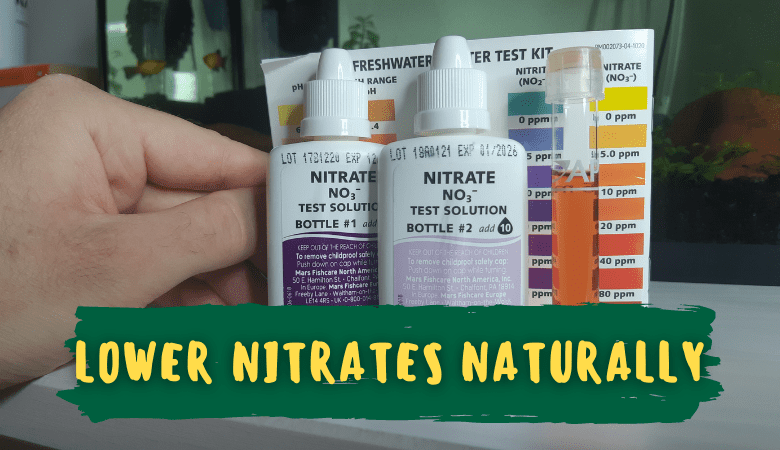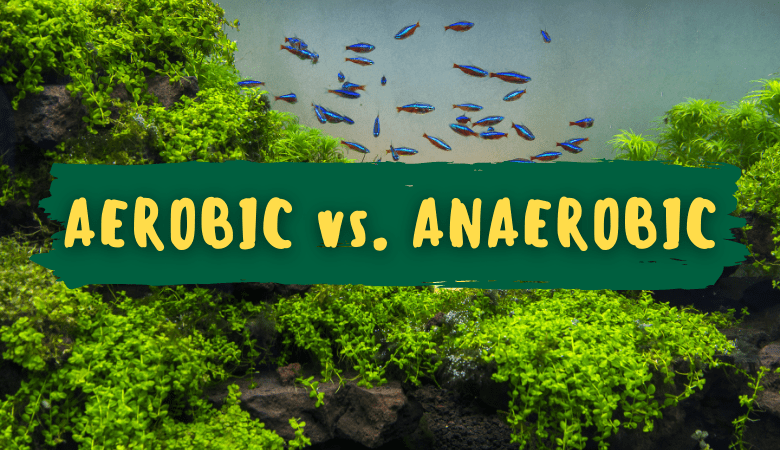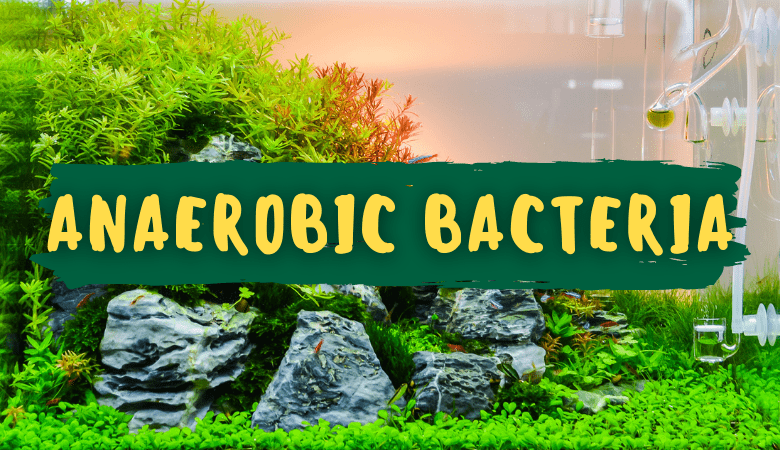Increase denitrifying bacteria in an aquarium by creating a deep substrate bed of at least 3-inches. The bottom inch will contain no oxygen and will allow denitrifying anerobes to cultivate and utilize nitrate instead. Sand or gravel substrate can be used.
The deep substrate method is a very simple and effective way to create anoxic pockets for anaerobic bacteria to grow. In this article we’ll explore how and why.
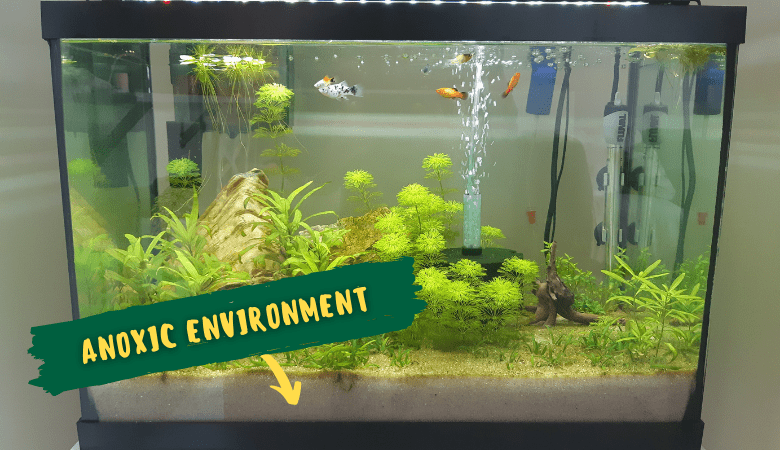
How to cultivate denitrifying bacteria
Create a deep substrate bed of at least 3-inches
The easiest method for cultivating denitrifying bacteria is by making your substrate at least 3-inches deep. Deeper substrate will be even more beneficial.
This is because oxygen will no longer be able to penetrate beyond about 2-inches of substrate. So the bottom inch or so will contain no oxygen and be considered anoxic. This is the exact type of environment required for denitrifying bacteria to grow.
What type of substrate should you use?
Many people recommend using sand for this because it’s very compact and will ensure that oxygen does not penetrate too deep. But experiments have shown that a coarse gravel substrate is just as, if not more, effective at achieving this.
What we did in our tank was started with 1-inch of organic garden soil on the very bottom. We also cracked open and sprinkled 5 or 6 Aquarium Co-Op root tabs on top of the soil layer.
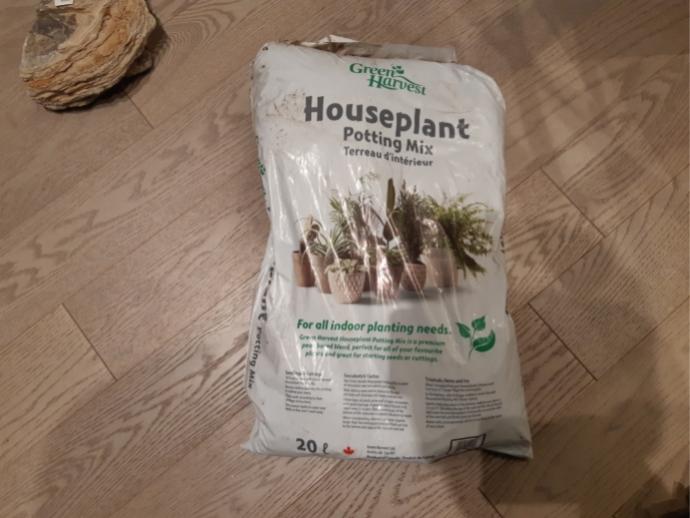
We then capped the soil with 2-inches of Super Naturals aquarium sand:
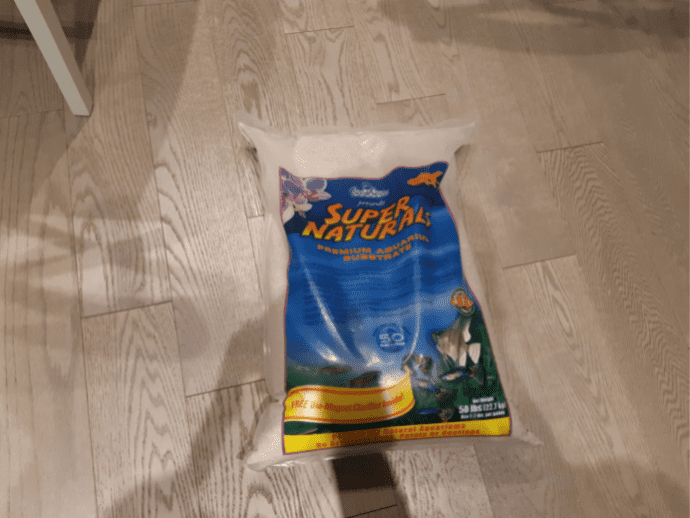
Is soil necesarry for denitrifying bacteria?/
Soil is not necesarry for cultivating denitrifying bacteria. However, it will already contain some organic carbon food sources, in the form of sticks and decaying materials, which denitrifying bacteria will need to consume energy.
Without this carbon food source in the substrate, your tank will need to produce its own food source over time from fish waste, detritus and decaying plant material. It will then need to sift through the top 2-inches of substrate layer to reach the anoxic zone where the bacteria lives. This will likely take 6-8 months to occur.
Also, the soil is tremendously nurtitious and beneficial for plant growth. Without nutrition in the soil to begin with, your plants will have difficulty establishing healthy roots.
Some fishkeepers may consider burying root tabs every month or so to solve this problem, but this will disturb the substrate and risk ruining the anoxic zone that exists beneath the substrate surface.
You could certainly use nutrient-rich aqua soils instead of garden soil, such as ADA Amazonia or Fluval Stratum.
Increase denitrifying bacteria by creating an anoxic environment
Denitifying bacteria are a special type of bacteria that have evolved to live in anoxic environments. Normally, aquariums do not contain anoxic zones.
What is an anoxic environment?
An anoxic environment contains no oxygen. Oxygen is present in water. So in a typical aquarium, oxygen will be present everywhere, including the filter and beneath the substrate if it’s only a couple of inches deep.
In order to create an anoxic environment in an aquarium you have to deliberately setup an environment in a specific way.
Why is an anoxic environment important for increasing denitrifying bacteria?
If an environment contains oxygen then oxygen will be used in a chemical process called oxidation. This is where oxygen attracts electrons from other chemical compounds, releasing energy and forming new chemical compounds.
In this scenario, nitrate is not used and is therefore not removed from the aquarium.
But in an anoxic environment, where there is no oxygen, nitrate becomes the most effective and readily available thing to attract electrons. As this happens, the nitrate (NO3) is converted into nitrogen gas (N2) and nitrous oxide gas (N2O).
Bacteria have evolved to find other oxidising agents when there is no oxygen present. They are not as effective as oxidising agents, but still pretty good.
Difference between anoxic, anaerobic and denitrifying
Anoxic means there is no oxygen present
The term anoxic simply refers to environments that contain no oxygen. In the aquarium hobby, we can create anoxic environments in our filters or beneath our substrate.
Anaerobic means there are no common electron acceptors present
The term anaerobic means living things that use oxidizing agents other than oxygen. These may include nitrate, sulfate, iron and manganese, among others.
Oxygen is the most effective oxidizing agent and will be used first when present in the environment. Other oxidizing agents are then used when it’s absent.
The terms anaerobic and anoxic are often used interchangeably because they mean similar things. Anoxic refers to the environment that’s devoid of oxygen, while anaerobic refers to living in the absence of oxygen or other oxidizing agents (electron acceptors).
In the aquarium hobby, we use the term anaerobic to describe the bacteria living in anoxic pockets.
Denitrifying bacteria is a type of anaerobic creature
Denitrifying bacteria is simply a type of anaerobic bacteria that utilizes nitrate as its oxidizing agent.
They breathe in nitrate and use it to help them harness energy from food sources. In order for them to use the nitrate instead of oxygen there can be no oxygen. This is why you need anoxic conditions.
There are other tyes of anaerobic bacteria that use other oxidizing agents, such as sulfate. These bacteria result in different chemical reactions, which are not classified as denitrification.



